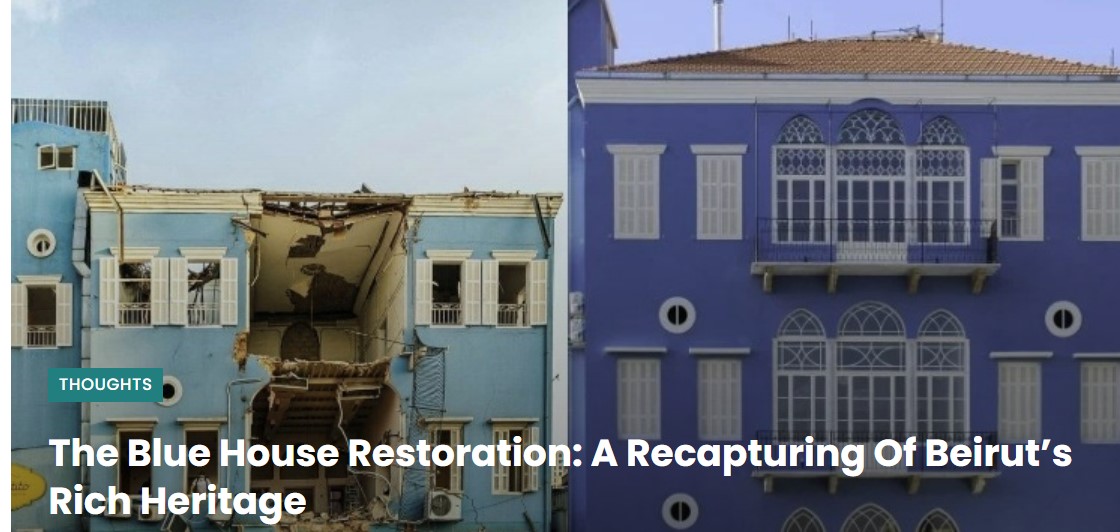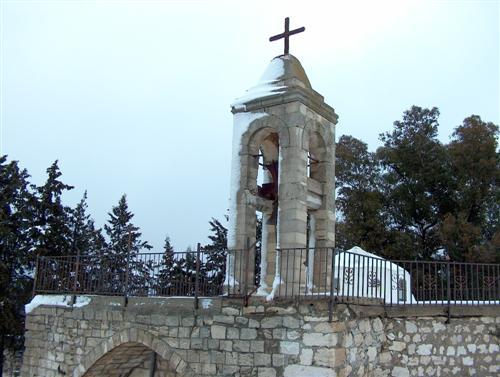NNA – Maronite Patriarch Beshara Boutros Rahi, warned on Sunday during Sunday Mass service against any attempt to disrupt the presidential elections …

By Ghalia Tamam -- Beirut, a picturesque coastal city known for its white capped mountains and booming night life is also home to some of the most beautiful heritage houses lining its inner neighborhoods. Nestled within Beirut’s oldest neighborhood, Abdel Wahab Al Ingiliz’s Street, are some of Beirut’s architectural gems including the 1890 Messarra House as well as the refurbished 1930s house transformed into the Albergo hotel. Unfortunately, not all of the city’s buildings stood the test of time. On August 4th 2020, a loud explosion thundered through the port of Beirut, killing at least 220 people while also destroying several of the city’s unique and precious buildings in its wake. The event saddened the hearts of its people and the Arab nation as a whole. To bring back a semblance of hope as well as a taste of Beirut prior to the 2020 incident, the Beirut Heritage Initiative (BHI) which launched after the events of the explosion collaborated with a maritime archaeology charity known as The Honor Frost Foundation to restore one of the buildings destroyed by the blast.
Located between Pasteur Street and Charles Helou Avenue, the Medawar 479 also known as The Blue House built in 1890 was hit badly by the explosion because of its proximity to the port. To restore it back to its old glory, the BHI reached out to the Honor Frost Foundation (HFF) to request funding for the restoration of several of the buildings hit by the blast including the Blue House. The HFF agreed to fund the Medawar 479 project and the renovation process started on November 2021. The entire project took over a year. On February 28th of this year, the HFF posted an update as well as a sneak peek of the house on Instagram, proudly stating that in over four months, they were able to complete 50% of the renovation process. Structural consolidation, as well as reconstruction of the pitched roof and rebuilding of the houses’ windows using Lebanese cedar wood, were some of the highlights of the restoration work.

VATICAN CITY (RNS) — Catholics in the United States are deeply divided over issues as disparate as LGBTQ inclusion, clerical sexual abuse and celebrating the liturgy, according to a summary of consultations carried out in dioceses across the country in recent months as part of Pope Francis’ Synod on Synodality. “Participants felt this division as a profound sense of pain and anxiety,” the U.S. bishops wrote in a summary released Monday (Sept. 19) to the public after being sent to the Vatican last month. In 2021, Francis launched a global discussion, requiring parish churches and a host of other religious organizations to gather their congregations to talk about how they view the hierarchy and issues facing the church. The discussion would inform a summit of bishops at the Vatican scheduled for October 2023 on the topic “For a Synodal Church: Participation, Communion and Mission.”
Bishops’ conferences were tasked with collecting comments made at the parish level and sending them to the U.S. Conference of Catholic Bishops, who produced a report for the Vatican. To collect the information from the over 66.8 million Catholics living in the United States, bishops divided the country into 15 administrative regions, including one representing the Eastern Churches. Contributions by Catholic organizations and individuals were grouped into a 16th region. A total of 290 documents were sent to the U.S. bishops to summarize. In a section of the document titled “Enduring wounds,” the bishops wrote that Catholics have brought divisions born in the political arena, including views on the Eucharist and the celebration of Mass, into the pews. A controversy about whether Catholic pro-choice politicians, including President Joe Biden, should be allowed to receive Communion at Mass has fractured Catholic communities in recent years and led U.S. Bishops to launch a $28 million three-year process to “restore” and “revive” the Eucharist.
Francis’ decision last year to strongly restrict the celebration of Mass in the Old Latin Rite, which the pontiff believed had become a rallying cause for conservative dissent, has led some Catholics to lament “the level of animosity” and “feeling judged” in the church, the USCCB report said. The polarization has also affected the church hierarchy, with the divisions among bishops — and sometimes between bishops and the pope — becoming “a source of grave scandal,” the summary stated. “This perceived lack of unity within the hierarchy seems to, in turn, justify division at the local level,” the document said. Connected to the topic of polarization was “marginalization.” The report emphasized calls by many Catholics for the church to become a more welcoming and open space. Two groups most marginalized, it suggested, were those who lack social or economic power and those whose lifestyle is condemned by church teaching.

By Patrick Huston -- bollyinside.com -- On September 22, the Association of Banks in Lebanon (ABL) stated that all banks in the nation will close permanently due to aggressive depositor withdrawals. The government limited access to the depository accounts and shut down all banks on September 16 for a week due to the economic crisis. Young people in Lebanon are using cryptocurrencies to get away from the financial turmoil, which has increased usage since 2021. Changpeng Zhao, the CEO of Binance, also tweeted the news. In response to Zhao’s tweet, hundreds of people expressed their support for the ownership and decentralisation of cryptocurrencies, which keep them from going out of business like the banks in Lebanon. Reuters reports that by September 2021, the Lebanese pound, which was pegged at roughly $1,500 at the time, had dropped to $15,000 on the black market. Due to this, banks had to halt withdrawals because depositors continued to take money out despite large losses.
financial emergency
Since August 2019, the nation has been experiencing a financial crisis, which got worse in 2020 with the explosion in Beirut and the epidemic. In 2020, the IMF predicted that Lebanon would suffer a loss of about $83 million and put up a recovery strategy for the country.
Bitcoin in Lebanon
Khazen History


Historical Feature:
Churches and Monasteries of the Khazen family

St. Anthony of Padua Church in Ballouneh
Mar Abda Church in Bakaatit Kanaan
Saint Michael Church in Bkaatouta
Saint Therese Church in Qolayaat
Saint Simeon Stylites (مار سمعان العامودي) Church In Ajaltoun
Virgin Mary Church (سيدة المعونات) in Sheilé
Assumption of Mary Church in Ballouneh
1 - The sword of the Maronite Prince
2 - LES KHAZEN CONSULS DE FRANCE
3 - LES MARONITES & LES KHAZEN
4 - LES MAAN & LES KHAZEN
5 - ORIGINE DE LA FAMILLE
Population Movements to Keserwan - The Khazens and The Maans
ما جاء عن الثورة في المقاطعة الكسروانية
ثورة أهالي كسروان على المشايخ الخوازنة وأسبابها
Origins of the "Prince of Maronite" Title
Growing diversity: the Khazin sheiks and the clergy in the first decades of the 18th century
Historical Members:
Barbar Beik El Khazen [English]
Patriach Toubia Kaiss El Khazen(Biography & Life Part1 Part2) (Arabic)
Patriach Youssef Dargham El Khazen (Cont'd)
Cheikh Bishara Jafal El Khazen
Patriarch Youssef Raji El Khazen
The Martyrs Cheikh Philippe & Cheikh Farid El Khazen
Cheikh Nawfal El Khazen (Consul De France)
Cheikh Hossun El Khazen (Consul De France)
Cheikh Abou-Nawfal El Khazen (Consul De France)
Cheikh Francis Abee Nader & his son Yousef
Cheikh Abou-Kanso El Khazen (Consul De France)
Cheikh Abou Nader El Khazen
Cheikh Chafic El Khazen
Cheikh Keserwan El Khazen
Cheikh Serhal El Khazen [English]
Cheikh Rafiq El Khazen [English]
Cheikh Hanna El Khazen
Cheikha Arzi El Khazen
Marie El Khazen